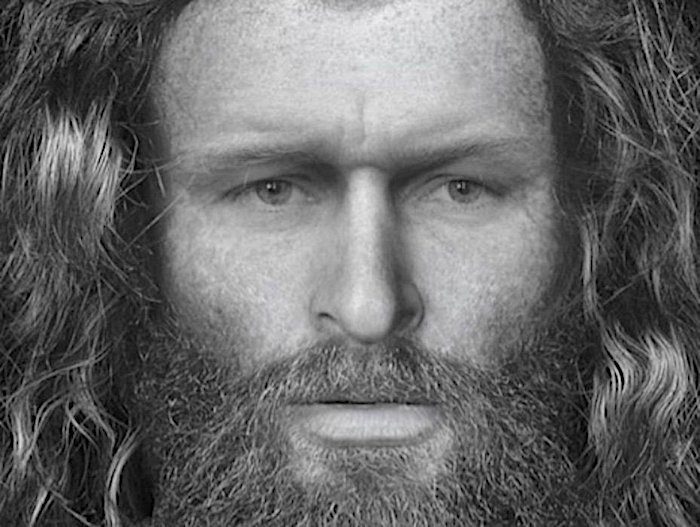
© University of DundeeReconstructed face of the Pictish man.
A team of Archaeologists excavating a cave in the
Highlands of Scotland, were amazed to discover a
superbly preserved skeleton of a Pictish man at the entrance. With the help of technology, scientists managed to successfully reconstruct the face of the man, who was violently murdered in around 600 AD.
Skeleton was in Remarkable State of PreservationA group of archaeologists excavating a cave in the Black Isle, Ross-shire in Scotland, couldn't believe their eyes when they discovered the ancient skeleton buried in a recess of the cave. A bone sample sent for radiocarbon dating showed that
the man died between 430 and 630 AD during the Pictish period. His body had been positioned in an uncommon cross-legged position, with large stones holding down his legs and arms. Archaeologists from the
Rosemarkie Caves Project found the skeleton while researching whether the cave might have been occupied.
Excavation leader Steven Birch
told BBC News: "Here we have a man who has been brutally killed, but who has been laid to rest in the cave with some consideration - placed on his back, within a dark alcove, and weighed down by beach stones. While we don't know why the man was killed, the placement of his remains gives us insight into the culture of those who buried him. Perhaps his murder was the result of interpersonal conflict, or was there a sacrificial element relating to his death?"
Victim Suffered a Brutal EndThe bones were sent to one of the most decorated forensic anthropologists in the world, Professor Dame Sue Black of Dundee University's Centre for Anatomy and Human Identification (CAHID), where Dr. Black verified that the "fascinating" skeleton was in a remarkable state of preservation. Dr. Black and her team - including Dr. Christopher Rynn and PhD students Micol Zuppello, Viviane Lira and Samantha Goodchild -
were able to describe in detail the horrific injuries the man had suffered and concluded that he sustained at least five blows that resulted in fractures to his face and skull, allowing them to understand how the man's short life was brought to a violent and brutal end. Dr. Black
told BBC News, "From studying his remains, we learned a little about his short life but much more about his violent death. As you can see from the facial reconstruction, he was a striking young man, but he met a very brutal end,
suffering a minimum of five severe injuries to his head."To read more of this article, go
here.Theodoros Karasavvas J D -M A has a cum laude degree in Law from the University of Athens a Masters Degree in Legal History from the University of Pisa and a First Certificate in English from Cambridge University.

Reader Comments